In 1948, editors of the Volunteer Yearbook had some big dreams for their campus. Though some of those dreams never came to fruition, some happened just a few years later.
“We’d like to see the Student Union building across from what is now Fifteenth Street, where it can be a logical and convenient hub upon which revolves a full college life. There it joins the three areas of development—living, learning, and playing. New buildings and additions to existing ones should help provide space for expanded enrollment and curricula. The proposed Medical Center drawn into Circle Park would make the University of Tennessee a leader in various lines of medical research. Possibly this blueprint for the future will never be realized…we’re hoping that U-T outgrows even a pipedream such as this. Who knows?”
It’s safe to say that even though the medical center wasn’t built on campus, UT outgrew the blueprint those editors dreamed up. They would most certainly marvel at the new Student Union and the state-of-the-art Strong Hall classroom building. In the past decade, UT has initiated more than $1 billion in campus construction projects, improving the look of campus and, more importantly, the ability to serve students.
Below, you’ll find a timeline of major milestones in the growth of campus, as well as a look at what’s coming next and what dreams our current Vols have for their home, sweet home.
From the Hill to Strong Hall
1820s
At the time of its purchase, the Hill was wooded with native hardwoods. The first building on the Hill, later called Old College, was completed in 1828, and East Tennessee College opened in its new location.
1870s
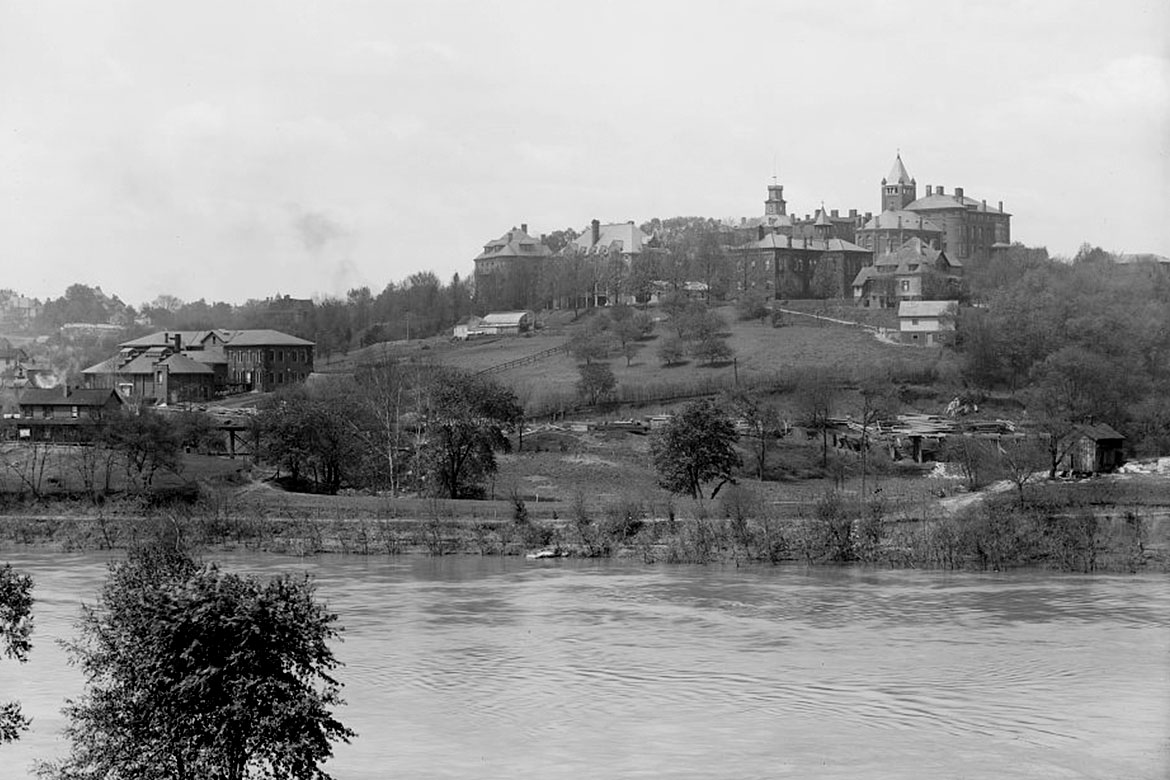 South College (1872) was originally built as a four-story dormitory. It is UT’s oldest remaining building and now houses the physics department.
South College (1872) was originally built as a four-story dormitory. It is UT’s oldest remaining building and now houses the physics department.
1910s
Carnegie Library (1911) opened in what is now Austin Peay Memorial Building with a gift from steel magnate Andrew Carnegie, who pledged $40,000 toward construction if the university would match it dollar for dollar.
1920s
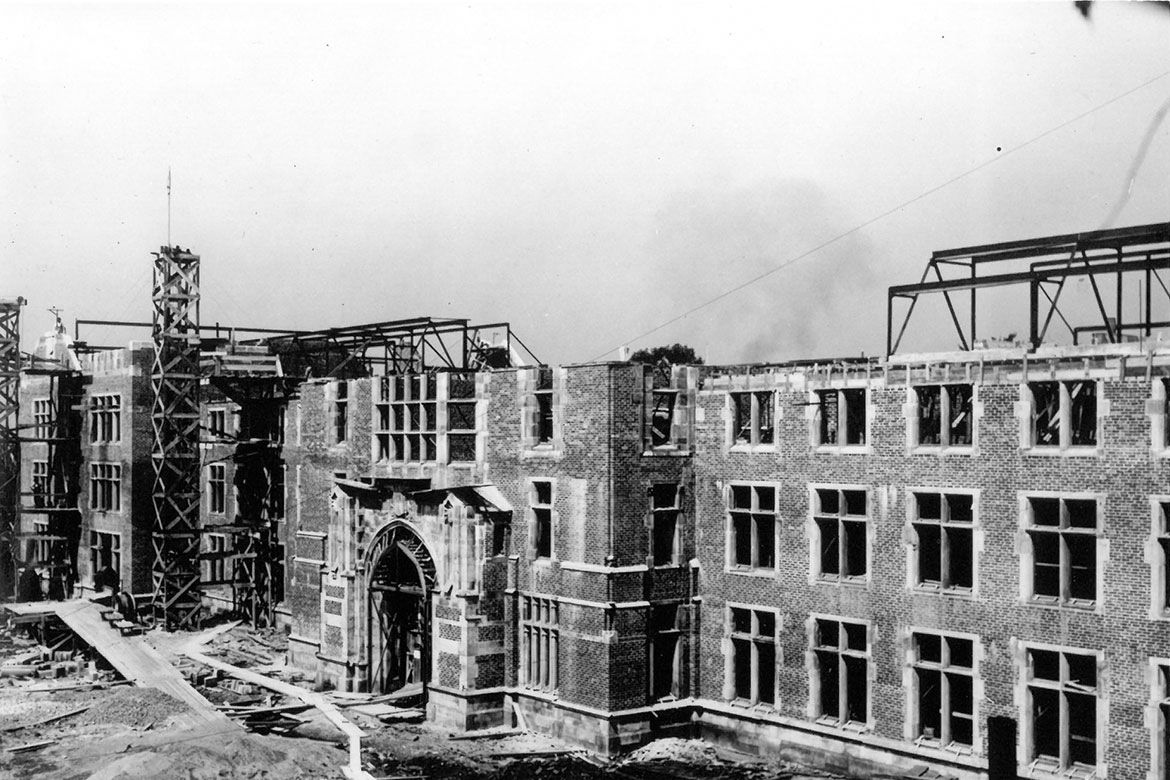
Ayres Hall Under Construction
UT’s landmark building, Ayres Hall (1921), was constructed on the Hill with the first $1 million appropriation from the legislature. Westminster Chimes sound from the tower and a clock face was installed in 2010, following a necessary major renovation.
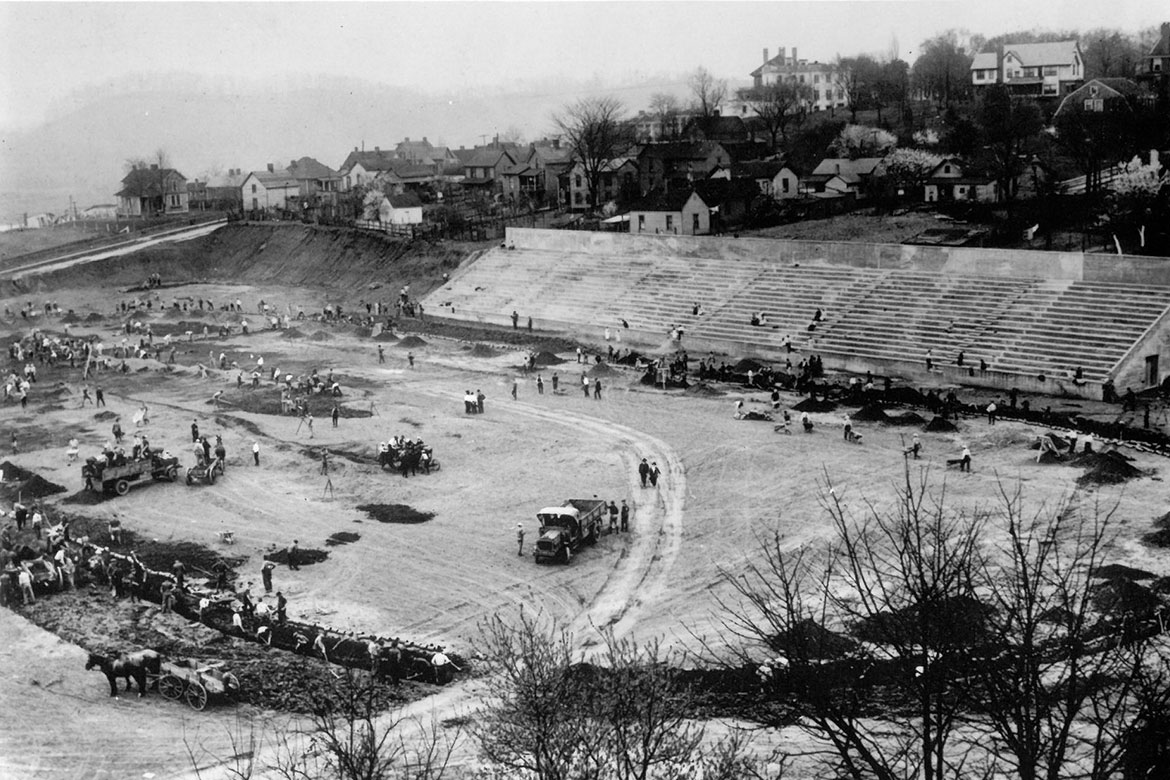 Shields–Watkins Field (1921) had its beginning in 1919. Colonel W. S. Shields, a UT trustee, provided the initial capital for an athletic field. It was called Shields-Watkins Field in honor of the donor and his wife, Alice Watkins-Shields. The original west stands of what would become Neyland Stadium were also built that year and seated 3,200.
Shields–Watkins Field (1921) had its beginning in 1919. Colonel W. S. Shields, a UT trustee, provided the initial capital for an athletic field. It was called Shields-Watkins Field in honor of the donor and his wife, Alice Watkins-Shields. The original west stands of what would become Neyland Stadium were also built that year and seated 3,200.
1930s
James D. Hoskins Library (1931) is unique on campus for its beauty and design. It is UT’s only building that embodies the collegiate Gothic architectural style for not only its exterior but also its interior.
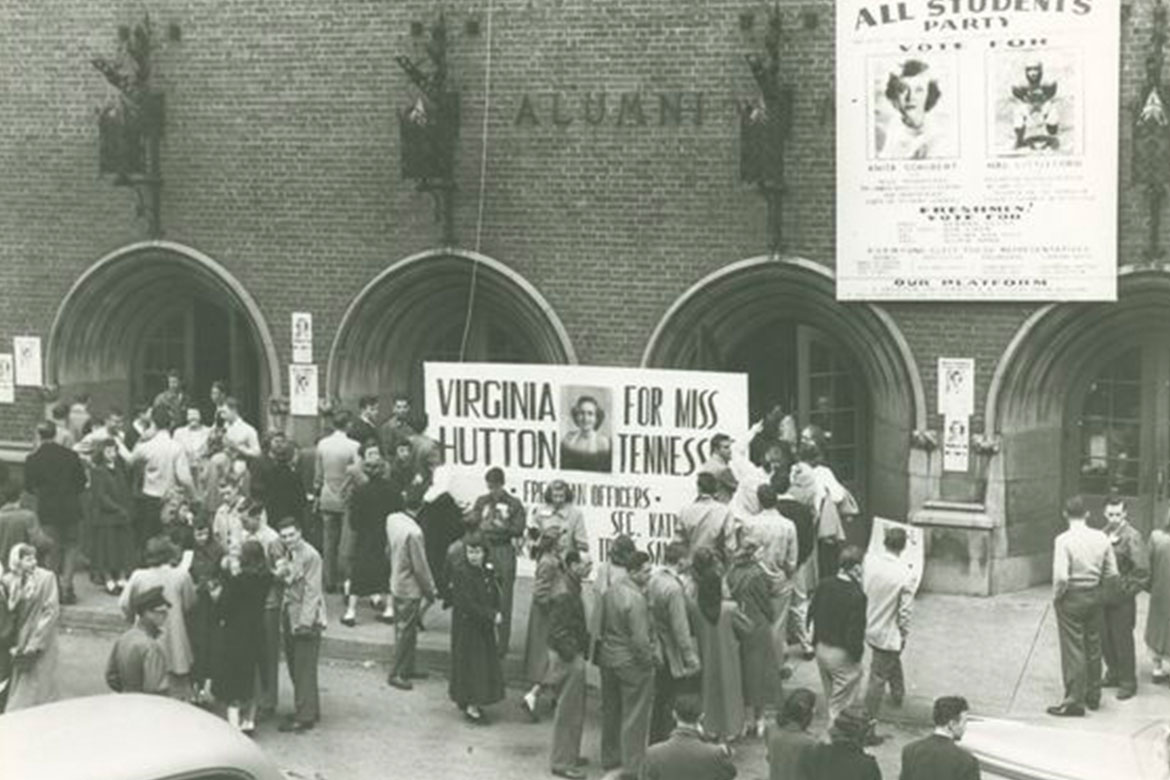 The Alumni Memorial Building (1934) is dedicated to the university students who lost their lives in World War I. It was originally constructed as an auditorium and gymnasium facility.
The Alumni Memorial Building (1934) is dedicated to the university students who lost their lives in World War I. It was originally constructed as an auditorium and gymnasium facility.
1950s
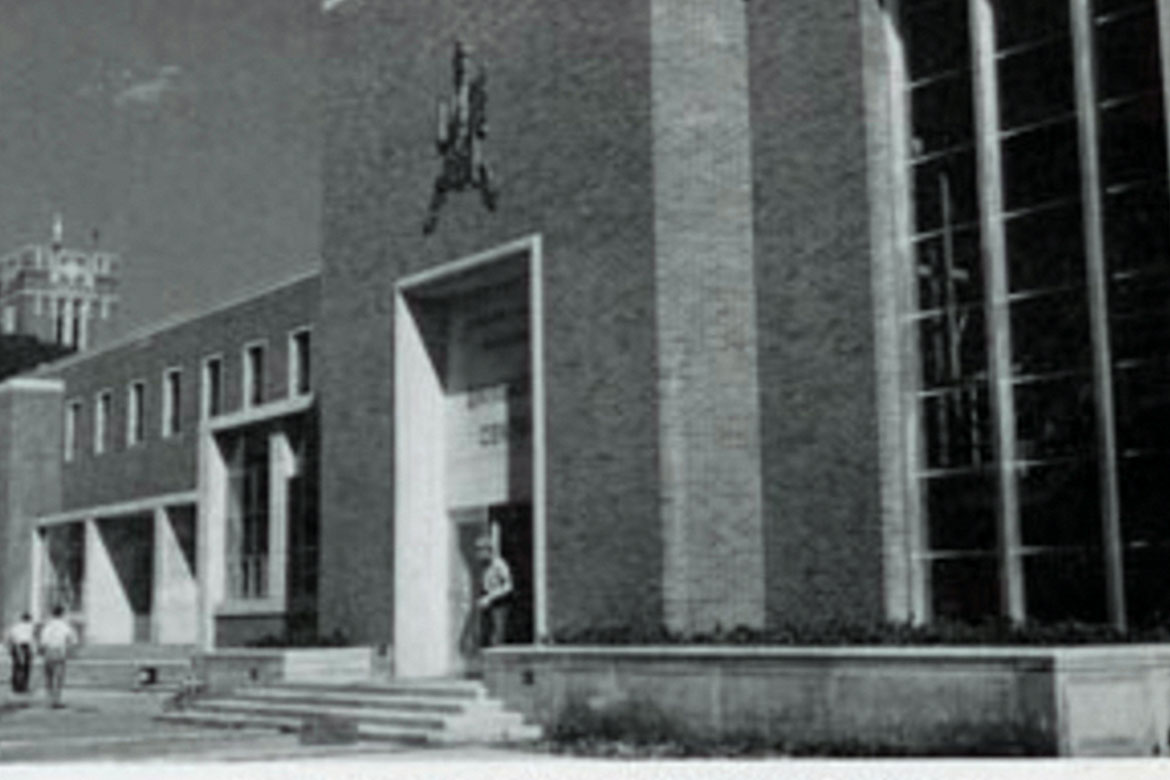 Carolyn P. Brown Memorial University Center (1954) was built with a gift of $1.5 million from John Scruggs Brown with direction to establish a memorial to his wife, Carolyn. The original 105,000-square-foot portion of the University Center was built with this money. An addition in 1967 more than doubled the size of the facility.
Carolyn P. Brown Memorial University Center (1954) was built with a gift of $1.5 million from John Scruggs Brown with direction to establish a memorial to his wife, Carolyn. The original 105,000-square-foot portion of the University Center was built with this money. An addition in 1967 more than doubled the size of the facility.
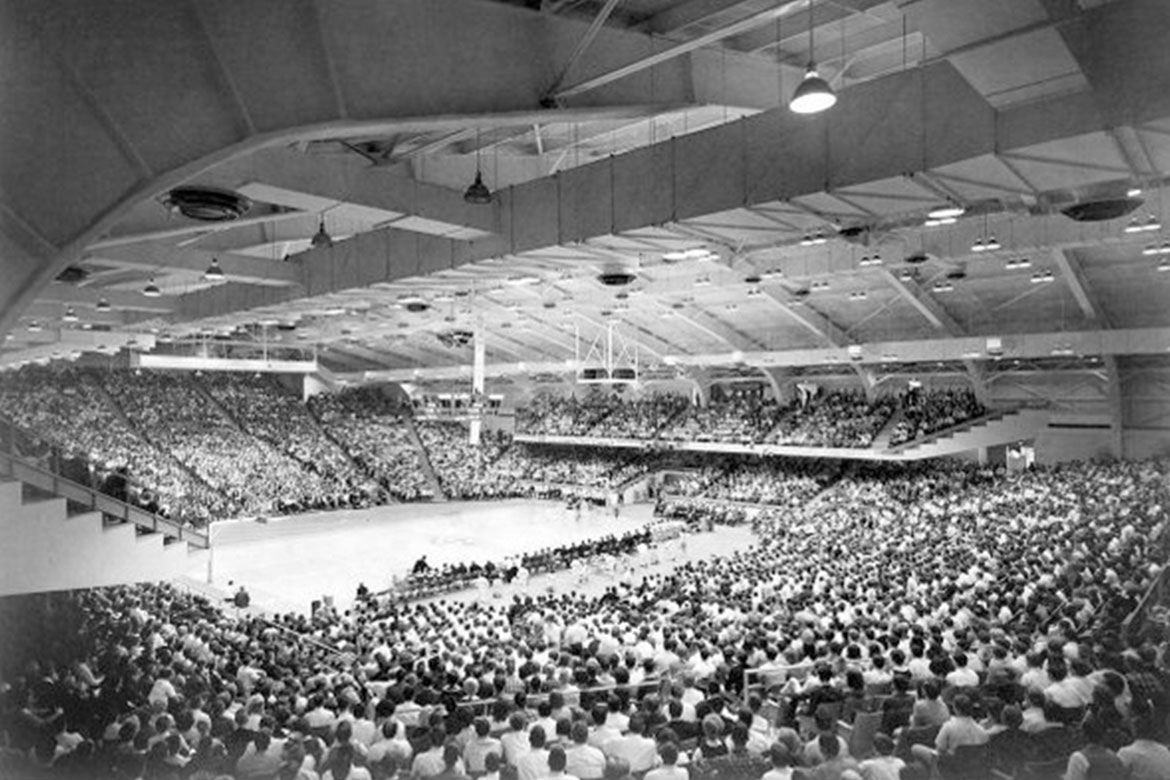 Stokely Athletic Center (1958) was the home of the men’s and women’s basketball teams until Thompson-Boling Arena was built in 1987. It played host to concerts from big names like Elvis Presley and Elton John.
Stokely Athletic Center (1958) was the home of the men’s and women’s basketball teams until Thompson-Boling Arena was built in 1987. It played host to concerts from big names like Elvis Presley and Elton John.
1960s
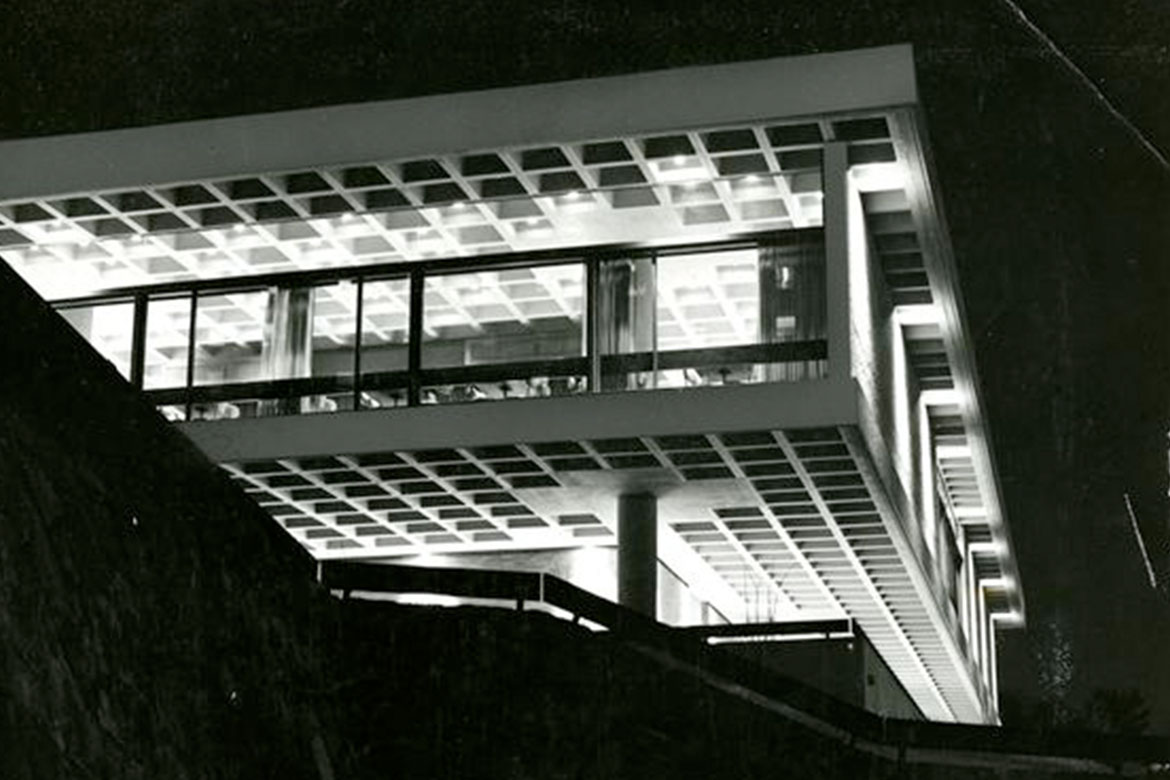 Presidential Complex (1966) consists of four residence halls, a central courtyard, and the Presidential Court Building.
Presidential Complex (1966) consists of four residence halls, a central courtyard, and the Presidential Court Building.
1970s
The Clarence Brown Theatre (1970) was heralded as one of the finest facilities in the nation, housing a proscenium theater and a smaller laboratory theater. It is named for legendary Hollywood movie producer Clarence Brown, who graduated from UT in 1910.
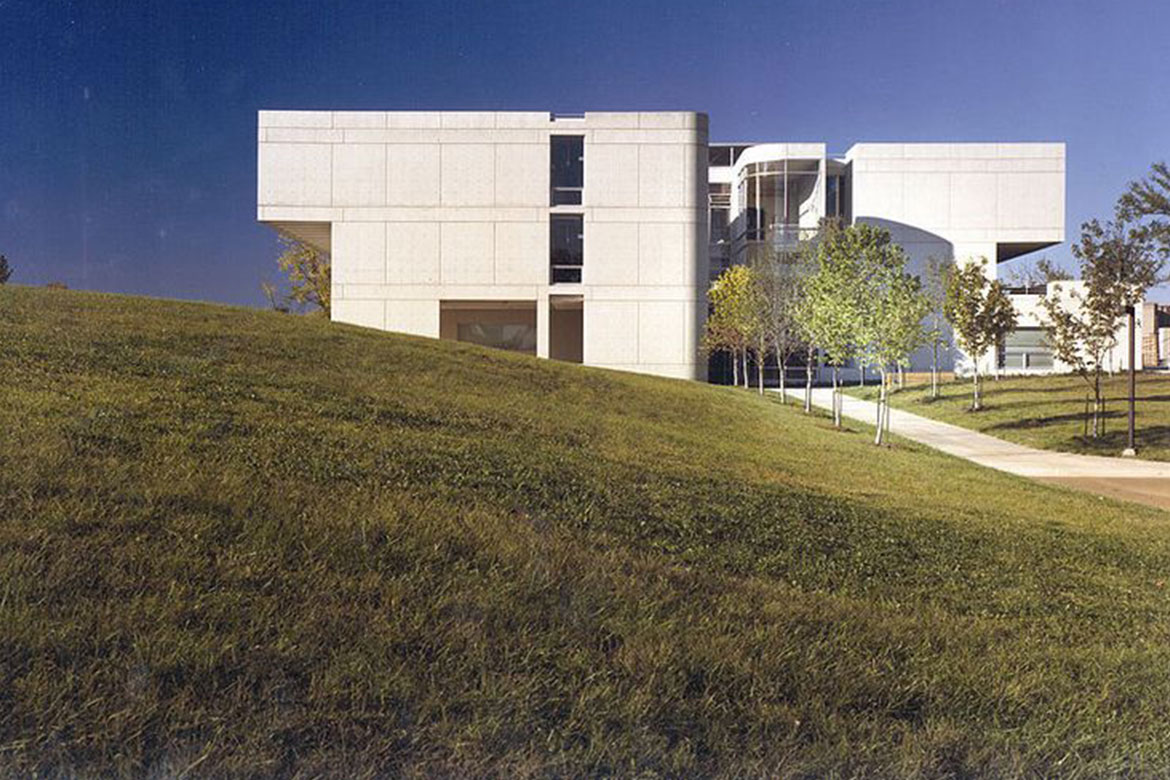 Art and Architecture Building (1975)
Art and Architecture Building (1975)
1980s
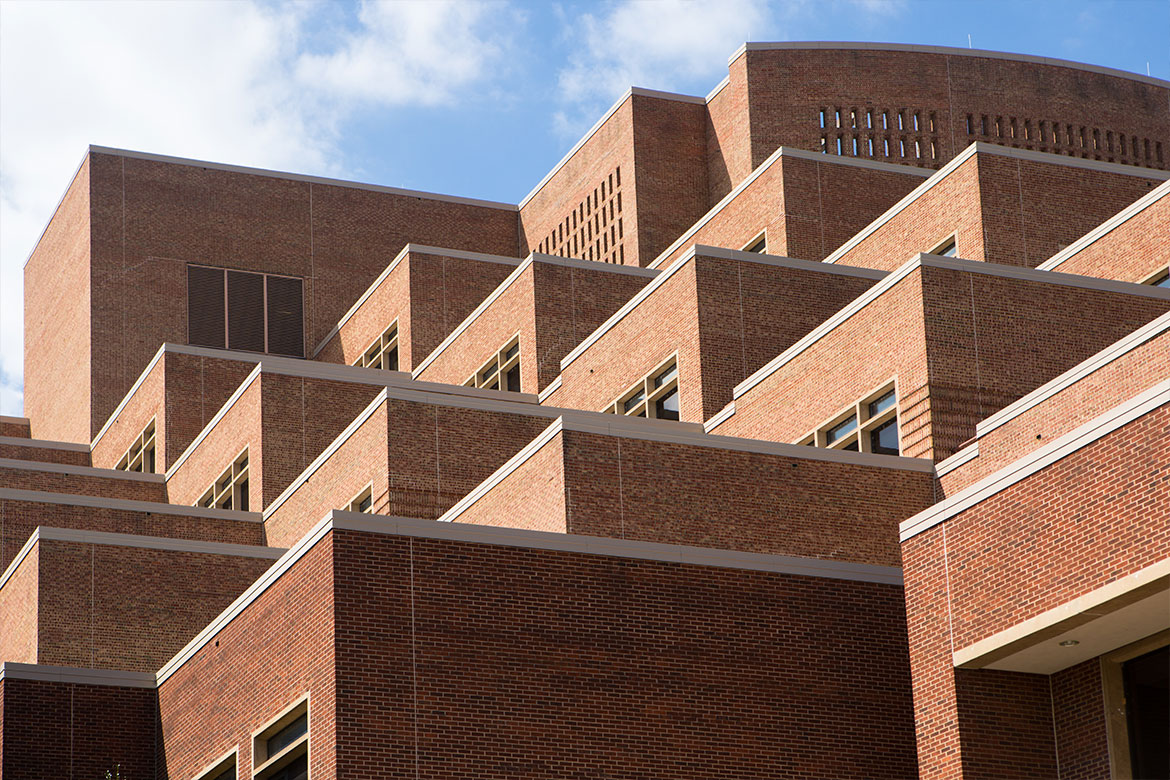 John C. Hodges Library (1987) is a renovation of the John C. Hodges Undergraduate Library, which was completed in 1969. It is the largest library in Tennessee and one of the largest in the Southeast.
John C. Hodges Library (1987) is a renovation of the John C. Hodges Undergraduate Library, which was completed in 1969. It is the largest library in Tennessee and one of the largest in the Southeast.
1990s
The Science and Engineering Research Facility (1997) provides space for highly specialized research essential to innovative study. The original Science and Engineering Building was completed in 1994 and linked together the Geology and Geography Building and the Dabney-Buheler Complex.
2000s
Frieson Black Cultural Center (2002)
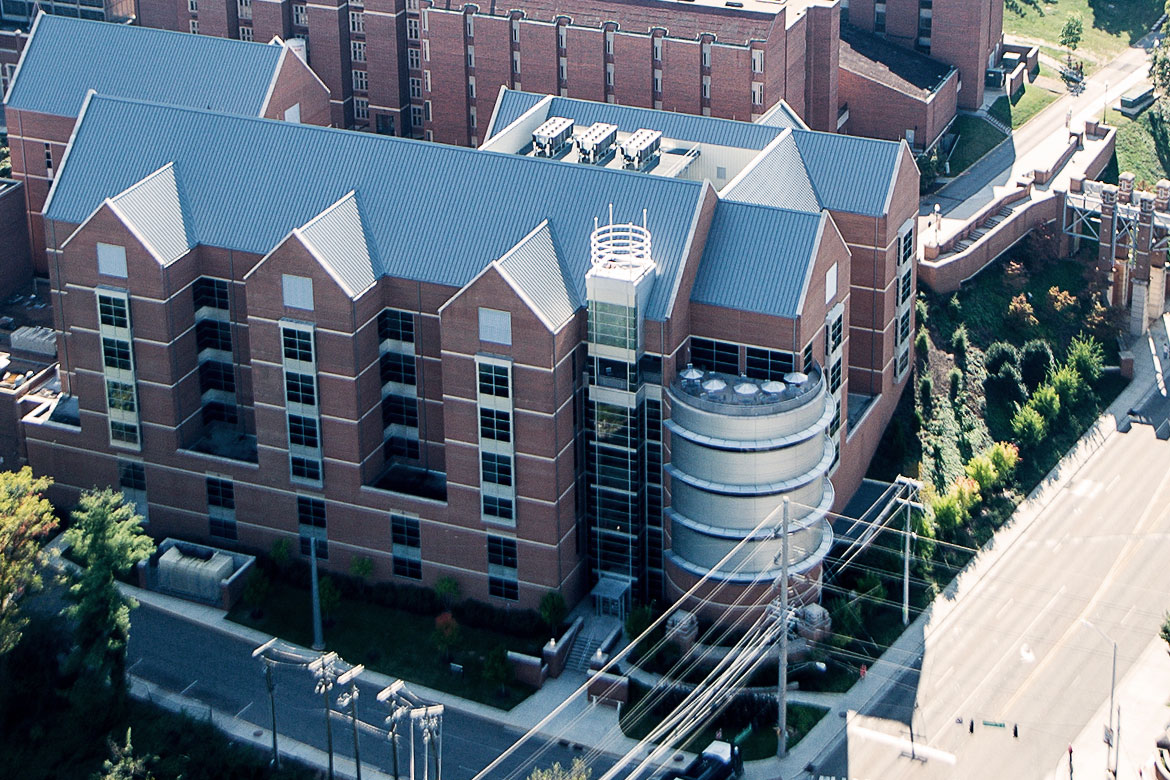 Min H. Kao Electrical Engineering and Computer Science Building (2007)
Min H. Kao Electrical Engineering and Computer Science Building (2007)
Haslam Business Building (2009) is constructed on the site of the old Glocker Business Building (1950), using that building’s façade.
2010s
William M. Bass Forensic Anthropology Building (2011)
Student Health Center (2012)
Student Rec Fields (2013)
The John D. Tickle Engineering Building (2013) houses the Department of Civil and Environmental Engineering and the Department of Industrial and Systems Engineering. It anchors a gateway to campus and provides a new link between Neyland Drive and the Hill.
The Natalie L. Haslam Music Center (2013) represents the first time the School of Music has been under one roof. The $40 million building replaces a facility that was constructed in 1964 to accommodate 150 students.
Fred D. Brown Jr. Residence Hall (2014)
Sorority Village (2014)
Student Union (2015) is the first phase of the building that replaced the Carolyn P. Brown Memorial University Center. It includes dining and shopping options and the Center for Career Development.
Joint Institute for Advanced Materials (2016)
Stokely Residence Hall (2017)
Strong Hall (2017), a state-of-the-art classroom and laboratory building, is constructed on the site of Sophronia Strong Hall, a women’s dormitory that opened in 1925 and closed in 2008. Front entrance archways from the old building have been preserved in an arcade along its west side.
What’s Coming Next
When the doors open on Phase II of the Student Union (2019), it will include a large auditorium/performance venue, a ballroom for events and banquets, additional dining areas, a student recreation area, SGA offices, a dean of students suite, and spaces for Sorority and Fraternity Life, Student Engagement, and the Center for Leadership and Service. It also will extend the building’s footprint westward toward Volunteer Boulevard. In total, the new Student Union will be at least 50 percent larger than the old Carolyn P. Brown University Center.
To the north of the Hill, across Cumberland Avenue, the Ken and Blaire Mossman Building (2018) is nearly complete. The six-floor classroom and laboratory facility will house portions of microbiology, psychology, nutrition, and biochemistry and cellular and molecular biology. It will have labs, general-purpose classrooms, a landscaped garden with outdoor seating, and interactive lecture halls similar to those in Strong Hall. Move-in should begin this summer.
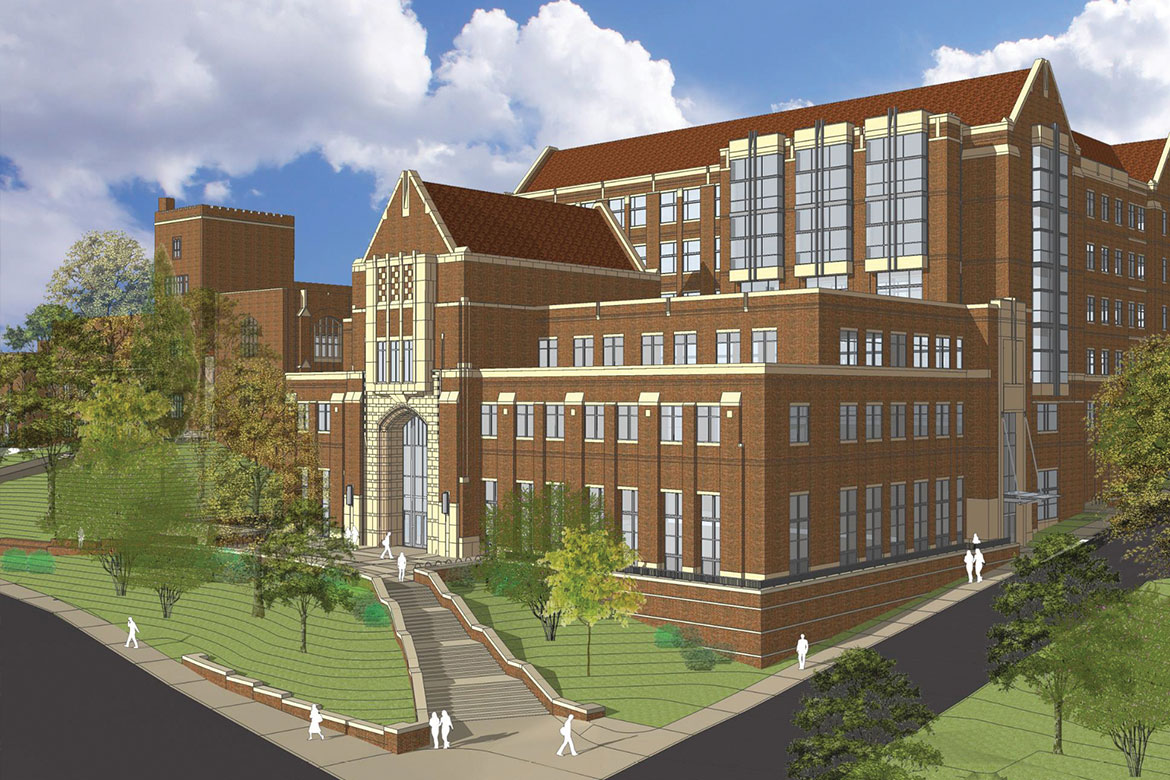
Ken and Blaire Mossman Building
As part of the West Campus Redevelopment Project (2020), two new residence halls are being constructed. These halls are set to hold 872 beds in 366 two-person semi-suite rooms, 44 two-person pod rooms, eight four-person apartments, and 20 one-person RA rooms, and should be complete in January 2019. A new dining facility, to be constructed at the former Humes Hall site, will have 73,256 square feet and a seating capacity of more than 1,300. The structure will feature an eight-platform Fresh Food Company dining facility with a full-service Chick-fil-A.
The Engineering Services Facility (2021) will be a 228,000-square-foot instructional and research building containing the Tickle College of Engineering’s freshman, honors, diversity, professional practice, and advising programs. A key fixture of the building will be state-of-the-art instructional fabrication laboratories for undergraduate engineering students. The building will also house the nuclear engineering department and will provide professional research laboratories flexible enough to accommodate a range of engineering subdisciplines.
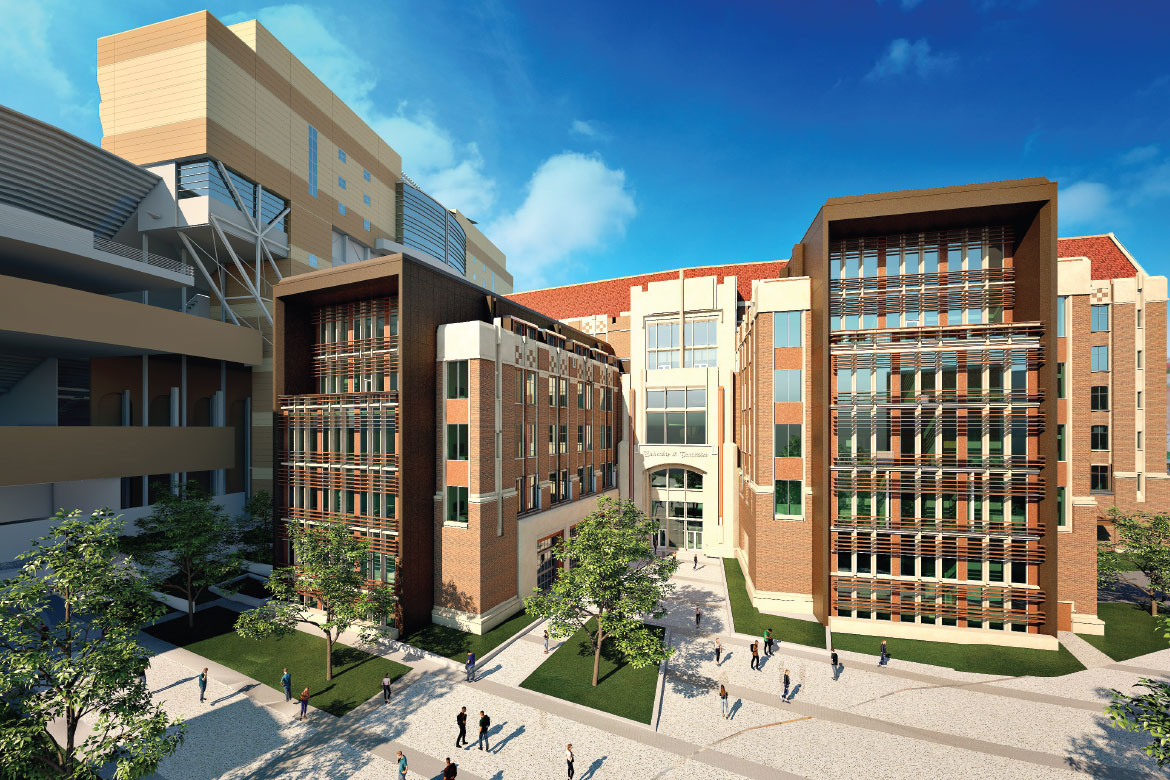 Renovations to Neyland Stadium will come in two phases. Specific highlights of the revised master plan renovations include expanding the entire concourses on the south and east sides of the stadium, increasing the current 0.5 square feet of space per patron to an average of three square feet per patron, and adding new table space and family areas within the concourse footprint. The south end—the highly trafficked riverfront view—will be aesthetically transformed to mirror the work already completed around Gate 21.
Renovations to Neyland Stadium will come in two phases. Specific highlights of the revised master plan renovations include expanding the entire concourses on the south and east sides of the stadium, increasing the current 0.5 square feet of space per patron to an average of three square feet per patron, and adding new table space and family areas within the concourse footprint. The south end—the highly trafficked riverfront view—will be aesthetically transformed to mirror the work already completed around Gate 21.
Vols’ Vision
From green space to gigantic slides, take a look at what our students would like to see for the future of our campus.
“The future of the University of Tennessee to me is a place that offers an environment that every student feels inspired by. Physically on campus, I hope buildings and classrooms offer every student of every level and major the equipment, software, and opportunities to practice their interests. These facilities are built to teach and prepare us for the fields we are about to enter, so let’s make them the best they can be.”
— Lindsey Owen, Graduate Student
“Gigantic slides! We have so many hills at UT—why not utilize them? Picture this: You just got out of class at Ayres Hall and your next one is at Estabrook. Well, that’s a complete downhill journey. Instead of taking nearly 100 stairs to get down to it, wouldn’t you rather slide your way there? Now that’s something I could get behind.”
— Sam Perez, Sophomore
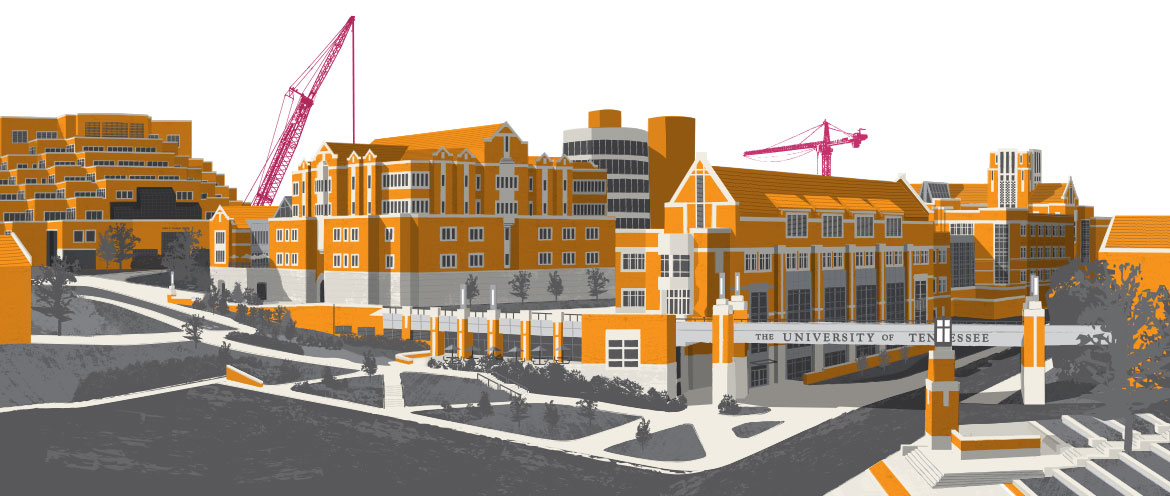
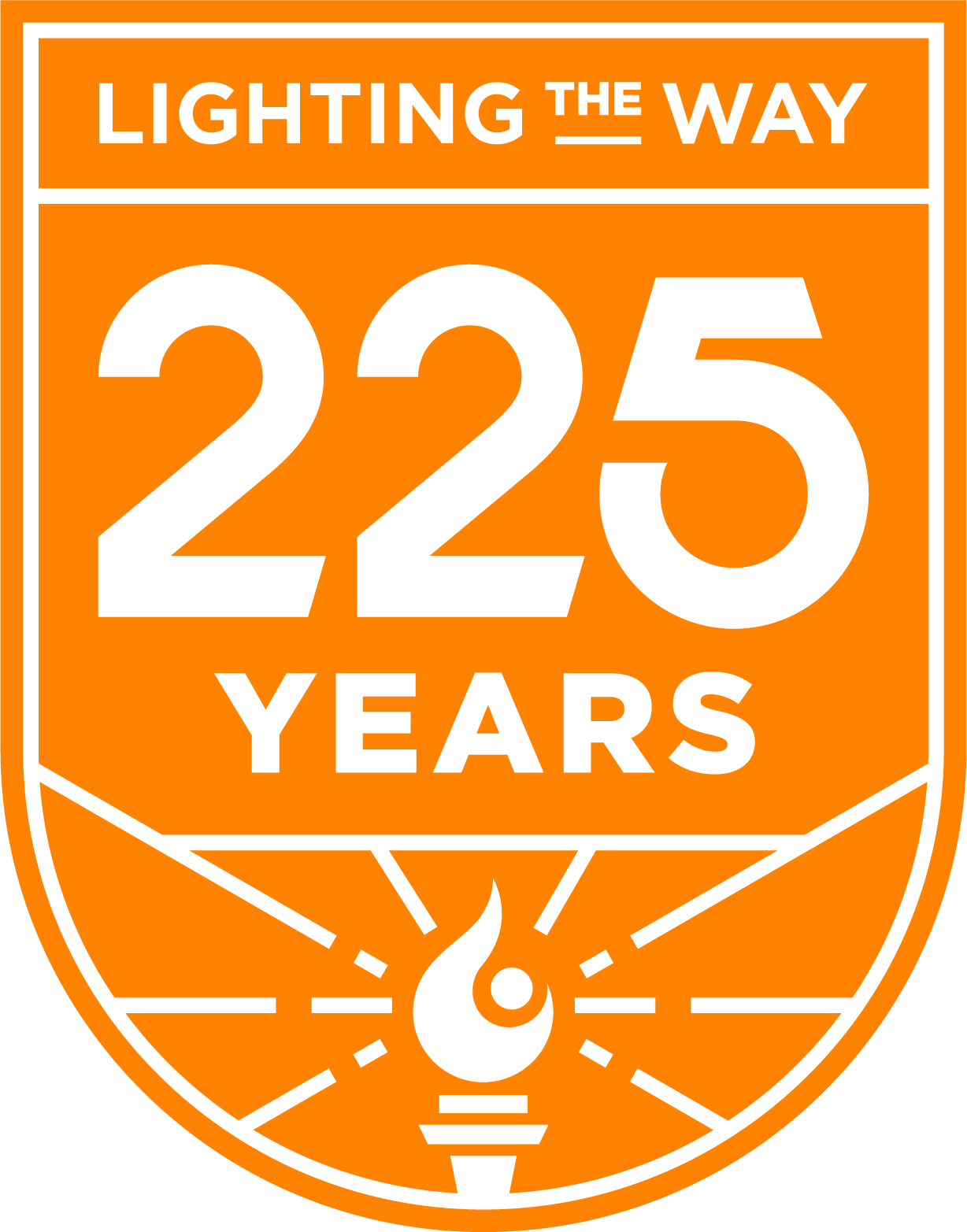 This story is part of the University of Tennessee’s 225th anniversary celebration. Volunteers light the way for others across Tennessee and throughout the world.
This story is part of the University of Tennessee’s 225th anniversary celebration. Volunteers light the way for others across Tennessee and throughout the world.


11 comments
Please tell me the buildings are not bright orange and this is for web purpose only. Must football drive everything. I like football better than most but really??????
Hi Elaine! This is an illustration of the new Student Union building created in a bright pop-art style. You can see actual photos of the building at conezone.utk.edu.
Best,
Cassandra Sproles
Executive Editor
Sorry Elaine, even back in the late 60’s when I was a student, football drove everything. The South loves sports and fraternities/sororities and that will NEVER change.
UT has spent $1 billion over the past decade tearing down its historic landmarks that are the heart and soul of the campus. The 224-year university will soon only have one pre-1900 building left. Not everything sparkly and new is better. Breaks my heart to read this article and visit a campus that I don’t recognize, which is why I don’t return very often anymore. Tearing down Estabrook Hall and Gen. Neyland’s house pretty much did it for me.
As a current UTK volunteer (a distance learner with the School of Information Science), I’d like to reiterate everything Robbie just said. The lack of historic character on campus makes me glad that I’m taking all my courses online.
What does the presidential complex look like now? When I was a freshmen it was brand new. I lived in Reese Hall. Do these buildings still stand?
Proud to be a 1972 graduate. The architectural styles of the buildings compliment each other.
I agree with the comments about UT losing it’s history and charm. I can barely get around campus now and it saddens me to see that so many old and stately buildings have been torn down. New is not always better.
I will agree that it is sad to see some of the older buildings disappear. I thought that they should have saved a lot more of Strong Hall. Estabrook, though old and historic, really did not fit in with a unified look for the campus. I have fond memories of it, but it was a wreck even in the early 70’s when I took classes there. The campus really has never looked better. I for one would like to see most of the buildings from the 60’s gone. The Presidential Complex is going away. I can hope that one day McClung Tower and the Humanities Building will be replaced by newer buildings in the Collegiate Gothic Style. I personally find colleges that have a uniform style and look to be more pleasing.
Melrose Hall had an old and fragrant Magnolia Tree in the courtyard. I miss them both. I think some of the old structures that are now gone could have been maintained, and a better use made with the Hoskins Library building, whose interior went from wonderful to woeful.
First day on campus and was super excited to see James D Hoskins library. I was very sad to see it completely neglected. It’s like they pawned it off to the ROTC programs. Seriously, take better care of your history